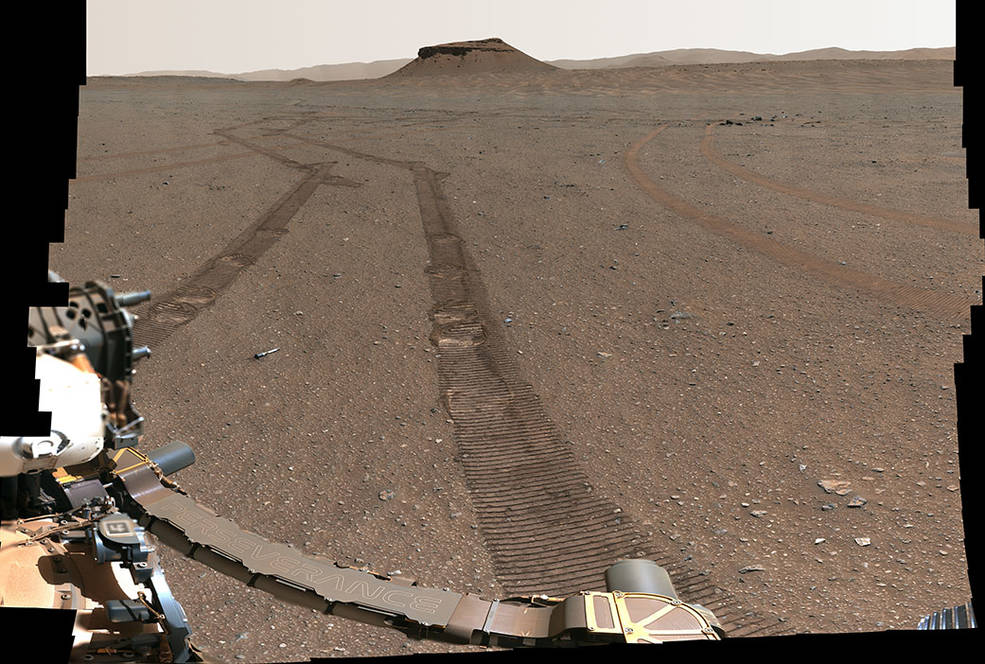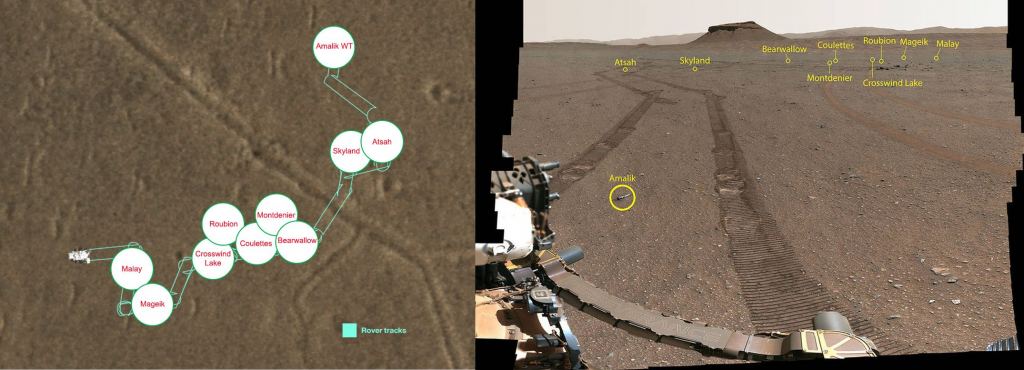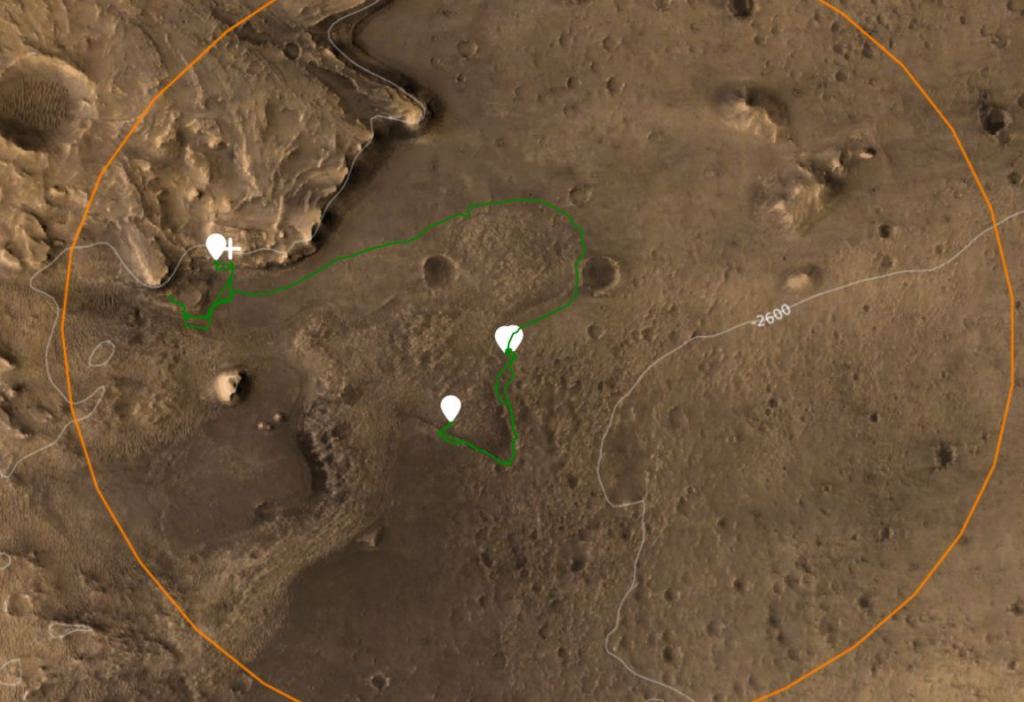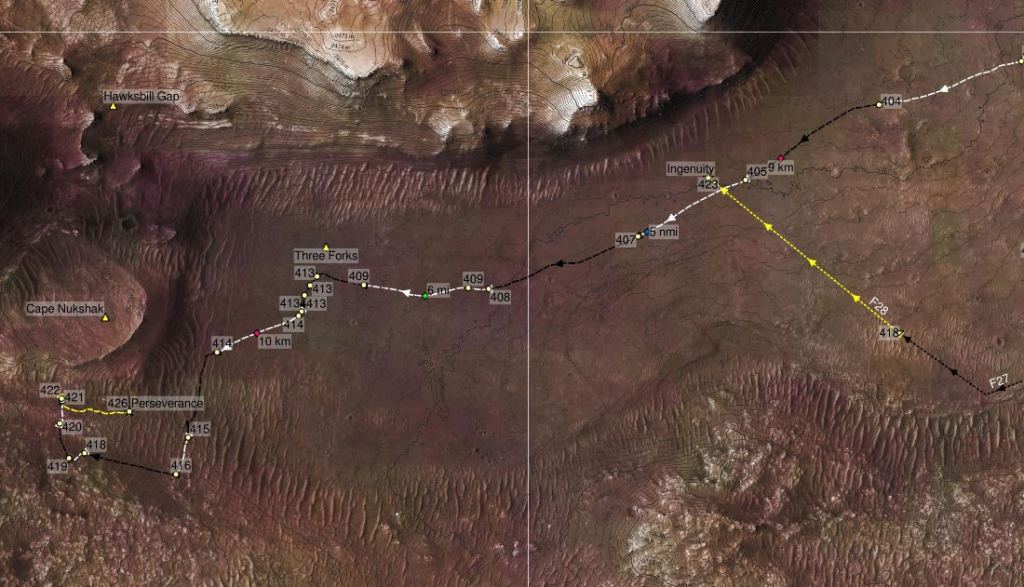NASA's Perseverance Rover has reached another milestone. It's finished caching its samples for a potential return to Earth. The sample depot is located in Mars' Jezero Crater, where Perseverance is busy searching for signs of ancient life.
Perseverance has been caching samples at its "Three Forks" depot since December 21st and placed its final, tenth sample tube there on January 28th. Each of the 10 samples is a duplicate of the samples Perseverance keeps onboard. The cache serves as a backup set in case something happens to the onboard collection.
Eight of the ten sample tubes contain rock and regolith, while one contains an atmospheric sample, and one is a witness tube. The eight solid samples represent a different geological type or feature on Mars. Each one is a different sample of either igneous or sedimentary rock. Together, they provide an invaluable cross-section of Mars' geology in the Jezero Crater, a region that formed four billion years ago.
The samples are positioned in a zig-zag pattern designed for easy access by a sample-retrieving helicopter. Each tube is about 5 to 15 meters apart (15 to 50 feet.) That gives the helicopter a safe maneuvering area around each sample. The locations of each sample is mapped precisely in case they get covered in dust and aren't visible.
The "Three Forks" depot is on a flat spot in Jezero Crater near the base of the raised, fan-shaped delta that formed in Mars' ancient past when a river flowed into the crater. Jezero Crater is an ancient paleolake, and the river carried clay sediments into the crater. The types of sediments in Jezero are capable of preserving ancient evidence of microbial life if it existed.
With this important milestone behind it, Perseverance will head to its next target: the delta.
"With the Three Forks depot in our rearview mirror, Perseverance is now headed up the delta," said Rick Welch, Perseverance's deputy project manager at JPL. "We'll make our ascent via the 'Hawksbill Gap' route we previously explored. Once we pass the geologic unit the science team calls 'Rocky Top,' we will be in new territory and begin exploring the Delta Top."
With the completion of the sample cache and the ascension to the top of the delta, Perseverance is leaving its Delta Front Campaign behind and beginning its Delta Top Campaign. The types of rock will change as Perseverance leaves the Jezero Crater behind.
"We found that from the base of the delta up to the level where Rocky Top is located, the rocks appear to have been deposited in a lake environment," said Ken Farley, Perseverance project scientist at Caltech. "And those just above Rocky Top appear to have been created in or at the end of a Martian river flowing into the lake. As we ascend the delta into a river setting, we expect to move into rocks that are composed of larger grains – from sand to large boulders. Those materials likely originated in rocks outside of Jezero, eroded and then washed into the crater."
One of Perseverance's first targets in its Delta Top Campaign will be a feature named the "Curvilinear Unit." It's an ancient Martian sandbar made of sediment deposited in a bend of a river that flowed into Jezero Crater. The location will give scientists a look at outcrops of mudstone and sandstone. Visiting this region also increases Perseverance's reach since it contains evidence of geologic processes well outside Jezero Crater.
 Universe Today
Universe Today




